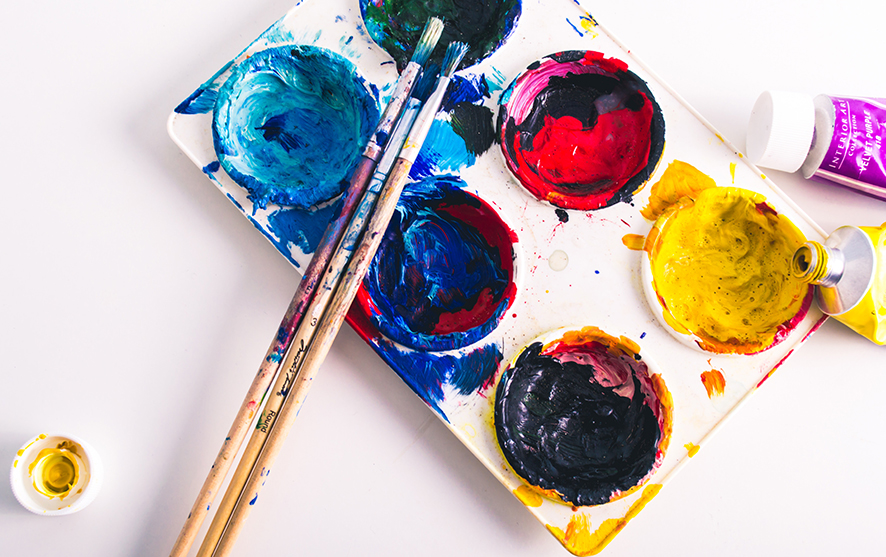Tidying up the garden grass
What you need Child-friendly scissors Some outdoor space - garden, park or grassy area Benefits [...]
Read more


This colour mixing exercise will get your child to be inquisitive about colours in their surrounding environment, and support their understanding of how colours can change. It develops your child’s creative thinking, investigating the exciting outcome when two colours are mixed together. Forming an equation out of the colours e.g. red + blue = purple, will help your child to later reflect on the activity and begin to learn how to make a desired colour – it’s also a fun way of developing some mathematical knowledge!
Let’s do some colour equations! First, start by writing the below equation on a piece of paper.
‘_____ + _______ = _______’
For older children, they might like to have a go at writing the equation themselves and even labelling the colours with their correct names.
Then, let them choose the first colour colour. You could take the lead by doing this exercise alongside your child, and saying ‘I’m going to pick…red’. Encourage your child to paint a shape using their chosen colour in the first space of the equation. Then, choose the second colour and paint it in the second spac. As you carry out the exercise, show your child how to wash their brush after using one colour and moving on to the next.
In the final space, paint a shape using the first colour with the second colour on top, mixing them together to observe the outcome. Ask your child to identify the name of the colour they’ve created and together label the colours.
Continue this with a range of colours, you can try challenging your child to make a specific colour from a found object in the environment, as well as extending their vocabulary and introducing new unusual colour names e.g. ‘beige’ ‘peach’ ‘mustard’ or adding descriptive words such as ‘sunshine yellow’ which will influence the child to invent their own names for their creations.